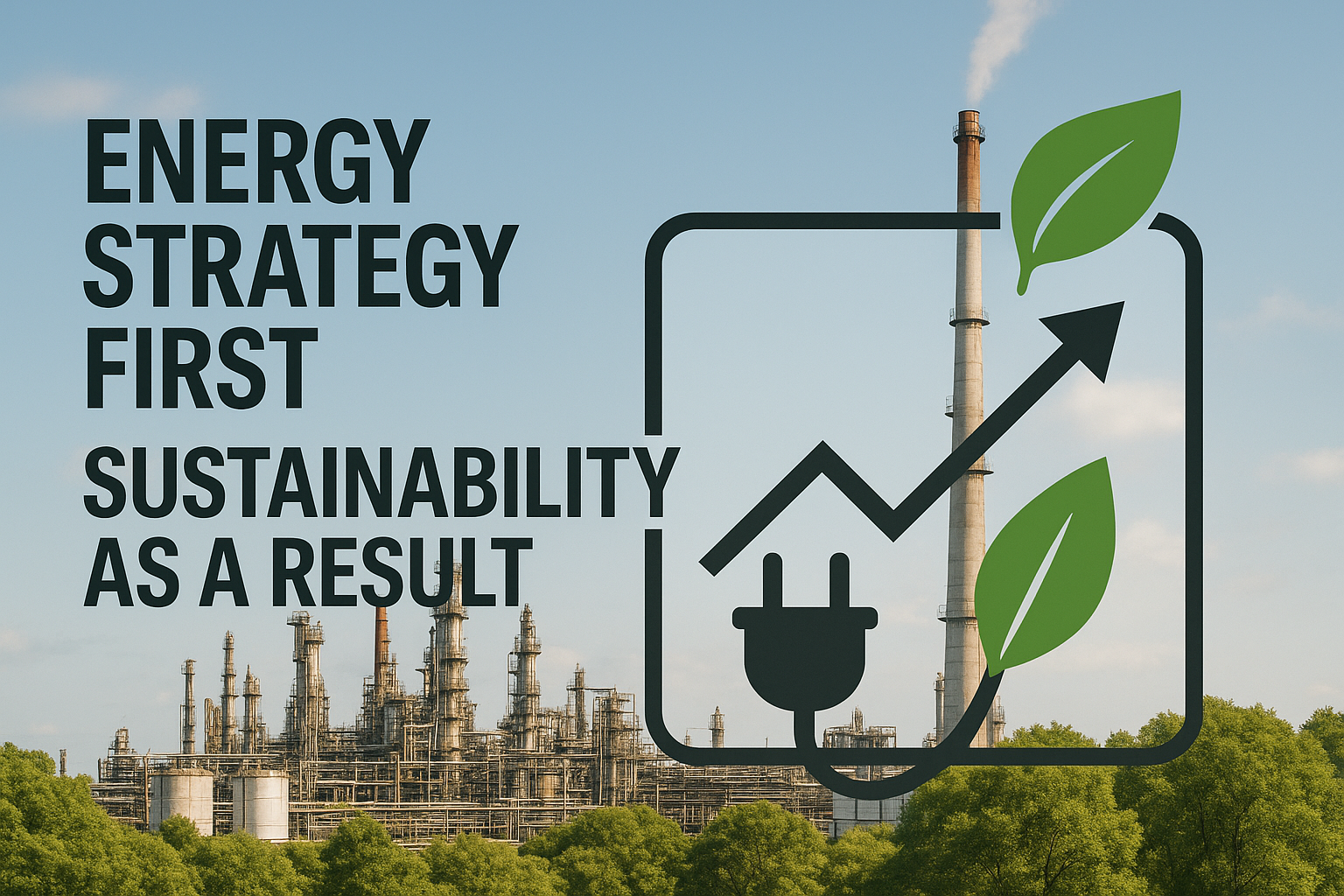Industrial operations are under increasing pressure to optimize performance amid rising energy costs and a shrinking pool of skilled engineers. Yet traditional control systems often fall short. Nearly 72% of process industry leaders using AI report measurable gains in efficiency and cost savings. This is a clear sign that legacy approaches are no longer enough.
Conventional Advanced Process Control relies on static models and manual tuning, making it difficult to adapt to real-time variability. In contrast, AI-driven systems use reinforcement learning and live analytics to continuously adjust key process parameters, often unlocking both energy savings and throughput gains.
AI addresses the core limitations of legacy systems: high setup costs, dependency on scarce expertise, and fragmented data quality. Better still, it integrates seamlessly with existing infrastructure, enabling smarter, more sustainable operations without large capital investment.
For process industry leaders seeking fast, measurable impact, Closed Loop AI Optimization provides a data-first approach built on real-world plant performance.
Quick-Start AI-Enhanced APC Checklist
The biggest objection about evolving from APC to Closed Loop AI Optimization (AIO) isn’t technical; it’s political. Technical teams benefiting from AIO need to prove to their stakeholders that the technology is demonstrating value. Most plant managers are unaware that measurable value can be demonstrated within days using a simulation mode approach that requires no major spending or operational disruption.
Start with a focused pilot targeting your highest-value constraint loops while keeping complete operational control. You’re not replacing your existing DCS or APC systems, you’re proving AI can improve what you already have before making bigger commitments.
Identify and Baseline Your Target Strategies
Pick 1-2 high-impact constraint areas where small improvements yield significant returns. Target energy-intensive processes, throughput bottlenecks, or quality-critical operations where traditional APC systems struggle with multivariable optimization. Record current KPIs for energy intensity, throughput rates, and emissions. These baseline metrics will help you when it comes time to prove your ROI.
You’ll need at least 3 months of historian data. AI techniques need high-quality, continuous data streams to build reliable models for your specific operations. The more data, the more operational scenarios experienced, and the stronger the model.
Launch Simulation-Mode Validation
Deploy your AI optimization solution in advisory-only mode, where it analyzes process data and creates optimization recommendations without writing set-points to your DCS. You see precisely what the system suggests and compare it against operators’ decisions in real-time. During simulation mode, AI-driven strategies learn your process dynamics while building operator confidence. Your team watches the AI’s recommendations, questions its logic, and confirms its understanding of your constraints before any automated control begins. This type of explainability directly addresses the “black box” concern.
Measure and Validate Results
Process industry leaders using AI see improved operational efficiency within the first month. Expect energy efficiency improvements and throughput increases once you shift from advisory mode to closed-loop control.
Required resources are simple: a complete DCS tag map, IT security approval for historian access, and a cross-functional champion who coordinates between operations, engineering, and IT teams.
The Optimization Roadmap: 6 Steps from Traditional APC to Closed-Loop AI
Moving your plant from traditional APC to Closed Loop AI Optimization (AIO) requires a systematic approach, balancing technical rigor with operational practicality. Here’s your six-step roadmap with clear ownership, realistic timelines, and measurable outcomes.
Step 1: Define Business-Critical KPIs
Your operations team takes 1-2 weeks to establish clear success metrics like margin dollars per hour, CO₂ emissions per metric tonne, and overall equipment effectiveness. The result is a prioritized KPI dashboard with baseline measurements and target improvements. Success means plant management, process engineering, and front-line operations all agree on what meaningful performance gains look like.
Step 2: Audit Existing Control Strategies
Process engineers spend 2-3 weeks identifying constraint bottlenecks and hidden optimization opportunities in your current control infrastructure. The audit lists active loops, documents performance variability, and maps interdependencies between process units. The outcome: a ranked list of high-impact opportunities where AIO can deliver the greatest margin lift.
Step 3: Clean and Contextualize Historian Data
Your IT/OT integration team manages this critical 3-4 week phase, ensuring data quality meets AI requirements. Data fragmentation and quality issues are major hurdles for successful AI deployment. Deliverables include validated historian tags and contextualized metadata connecting process conditions to business outcomes.
Step 4: Train the AI Model
The AI vendor or internal data science team takes 2-4 weeks for model development. Reinforcement learning techniques help the system learn optimal control strategies through simulated trial-and-error scenarios. The expected deliverable is a validated AI model showing stable performance across historical operating scenarios with documented safety boundaries and constraint handling.
Step 5: Run Simulation Mode Validation
Operations and process engineering jointly oversee this 1-2 week validation period where the AI generates recommendations without writing setpoints to your DCS. Success criteria may include prediction accuracy within established safety limits and operator confidence in the AI’s decision-making logic, though these aren’t universal formal benchmarks. This phase builds trust while proving the system’s reliability under live plant conditions.
Step 6: Activate Closed Loop AI Optimization
Plant management authorizes this final transition after completing operator training, establishing safety interlocks, and completing all other change management punchlist items. The AI begins autonomous setpoint optimization while maintaining human oversight capabilities. Expected outcome: measurable KPI improvements within 30 days, including energy efficiency gains and throughput increases based on industry benchmarks.
Integration & Change Management: Aligning AI with DCS, APC, and Workforce
Successfully deploying AI optimization solutions requires addressing both technical integration and human factors. The technical pathway follows a proven sequence: the plant historian feeds data through a secure edge gateway, which then writes optimized setpoints directly back to the DCS.Closed Loop AI optimization ensures minimal disruption to existing control systems while maximizing operational improvements.
Companies like Monroe Energy have already leveraged AI optimization to gain a competitive edge, demonstrating the practical viability of these solutions.
The governance framework must cover three critical areas:
- OT/IT cybersecurity protocols that protect both operational technology and information systems
- Fail-safe interlocks that maintain plant safety even during system maintenance, unexpected failures, or disengagements
- Management of Change documentation that satisfies corporate risk committees and regulatory requirements
Workforce adoption is the most critical success factor. Run operator workshops using offline simulators that let teams practice with the new system without affecting production. Install KPI scoreboards in control rooms to showcase real-time improvements in energy efficiency, throughput, and emissions. Target 100% workforce AI adoption by engaging every operator, engineer, and supervisor in the transformation process.
Implementation typically faces four common obstacles:
- System compatibility issues – Solved through modular deployment that integrates with existing DCS infrastructure.
- Data management constraints – Addressed by implementing standardized data collection practices and robust data governance protocols.
- Worker adaptability concerns – Eased when AI is positioned as a tool that augments human expertise rather than replaces it.
- Cybersecurity requirements – Met with comprehensive security assessments (e.g. SOC 2 audits) and air-gapped testing environments.
The key lies in phased implementation. Start with pilot projects that demonstrate measurable value before scaling plant-wide. This approach builds internal champions while minimizing operational risk.
Future-Proofing: From AI-Optimized to Autonomous Plants
The industrial sector is accelerating toward fully autonomous operations, where AI systems manage entire production networks with less human input. This evolution directly addresses core challenges: soaring energy costs, a shrinking skilled workforce, and the need for consistent performance across geographically dispersed facilities.
The AI-powered industrial plant of the future will continuously balance margin, energy use, and carbon intensity across an entire fleet, optimizing performance in real time. With self-optimizing, multi-plant fleets, a breakthrough at one site instantly benefits others, driving continuous improvement at scale.
Federated learning enables these systems to improve collectively without exposing plant-specific data, preserving security while accelerating innovation. Carbon-aware setpoints dynamically adjust operations based on real-time emissions and energy pricing, allowing companies to hit sustainability goals without compromising profitability.
For process industry leaders ready to future-proof their operations, Imubit’s Closed Loop AI Optimization (AIO) provides a practical, scalable foundation. The Imubit Industrial AI Platform not only delivers measurable efficiency gains today, it also lays the groundwork for fully autonomous, sustainable industrial operations tomorrow.
Schedule your complimentary assessment today to see how AI Optimization can deliver real value, faster than you imagine.




